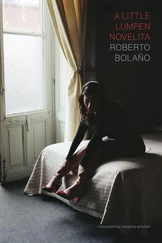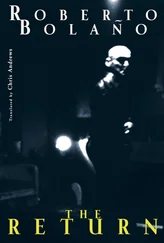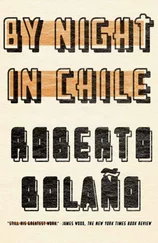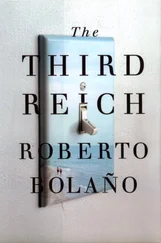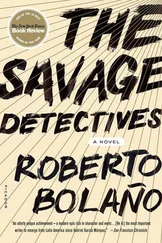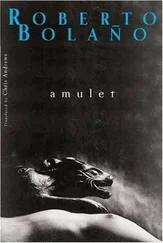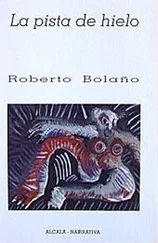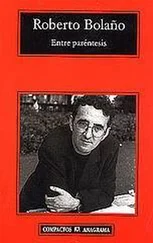Roberto Bolaño - Between Parentheses - Essays, Articles and Speeches, 1998-2003
Здесь есть возможность читать онлайн «Roberto Bolaño - Between Parentheses - Essays, Articles and Speeches, 1998-2003» весь текст электронной книги совершенно бесплатно (целиком полную версию без сокращений). В некоторых случаях можно слушать аудио, скачать через торрент в формате fb2 и присутствует краткое содержание. Год выпуска: 2011, Издательство: New Directions, Жанр: Публицистика, Критика, на английском языке. Описание произведения, (предисловие) а так же отзывы посетителей доступны на портале библиотеки ЛибКат.
- Название:Between Parentheses: Essays, Articles and Speeches, 1998-2003
- Автор:
- Издательство:New Directions
- Жанр:
- Год:2011
- ISBN:нет данных
- Рейтинг книги:4 / 5. Голосов: 1
-
Избранное:Добавить в избранное
- Отзывы:
-
Ваша оценка:
- 80
- 1
- 2
- 3
- 4
- 5
Between Parentheses: Essays, Articles and Speeches, 1998-2003: краткое содержание, описание и аннотация
Предлагаем к чтению аннотацию, описание, краткое содержание или предисловие (зависит от того, что написал сам автор книги «Between Parentheses: Essays, Articles and Speeches, 1998-2003»). Если вы не нашли необходимую информацию о книге — напишите в комментариях, мы постараемся отыскать её.
The Savage Detectives
Between Parenthese
Between Parentheses: Essays, Articles and Speeches, 1998-2003 — читать онлайн бесплатно полную книгу (весь текст) целиком
Ниже представлен текст книги, разбитый по страницам. Система сохранения места последней прочитанной страницы, позволяет с удобством читать онлайн бесплатно книгу «Between Parentheses: Essays, Articles and Speeches, 1998-2003», без необходимости каждый раз заново искать на чём Вы остановились. Поставьте закладку, и сможете в любой момент перейти на страницу, на которой закончили чтение.
Интервал:
Закладка:
The person taking the picture wins, but victory can lead to a death without hope of appeal. The person with open eyes wins, but whom does he beat? And what good does it do to win when we know that in the end everybody loses, that we all lose?
The vagabond children of Santiago and the ghosts of London. The wet and the dry in the work of Larraín.
I’d like to say that I’ve lived in one of his photographs. Maybe I have. What I know for certain is that I’ve strolled through one: I’ve walked the streets that Larraín photographed, I’ve seen those floors like mirrors (mirrors in which only the most unstable objects or nothing at all is reflected), I’ve been gazed at by the same people who were gazed at by Larraín.
He’s the accidental photographer, or so it seems; the playful photographer, the Chilean kid let loose. He appears to be many things that he isn’t. At times I think he seeks harmony or a simulacrum of harmony: the instant at which everything stops and men come to resemble objects. Nothing moves. The rain freezes in the air. The man with the umbrella grows to look like the equestrian statue in the background. The eye opens until it’s the size of a mouth.
I have the feeling that Larraín is the perfect tourist, the Medusa tourist who, as the result of years buried in the only corridor-country in the world and of generations of misspent, squandered, or forgotten Chilean lives, has been granted a gaze that is also a way of moving. Swift, agile, young, and vulnerable, Larraín scans a labyrinthine city and as he does so he scans us. The gaze of Larraín: an arborescent mirror.
Larraín photographs a line of people — waiting for the bus. This is in London but it might as well be on the fringes of hell. A perfectly orderly line, perfectly normal. When the bus comes everyone will get on and then the bus will go and the space where the people stood will remain empty for an instant. The sequence can be infinitely repeated. Incidentally, the people who get on the bus aren’t going to hell. Fate has determined that they’ll wander forever in the margins of the photograph.
Larraín photographs people walking in Hyde Park. The photograph seems very English and ordinary: it captures the same fragile harmony as the photograph of the queue. And yet, if I examine it carefully, on the right side I spot a parochial native of Santiago de Chile, a government or bank official, clerk or bureaucrat, a good man who has never left Chile, his little hat says as much, startled as he walks through Hyde Park with a stern look on his face (though his sternness is of the most helpless variety), as if he were thinking abstruse thoughts. On the left side of the picture a girl, possibly a nanny, pushes a baby carriage that isn’t seen: only the handle appears in the frame. This girl is English: her eyes gaze at the carriage that I can’t see and the child who I can’t see, but by the expression on her face it’s clear that she’s elsewhere, a much warmer place, the tropic of geometric forms, the tropic of geometric exiles. The photograph doesn’t end with these two figures, who actually only frame it and thereby give it a twist; between the Luciferian nanny and the parochial Chilean from Santiago, but further in the distance, a couple stroll arm in arm toward the photographer and the foreground, which thus becomes a promise of the future, as if the fate of that ideal (and eminently British) couple were the peripatetic Chilean and the baby we can’t see and the baby’s questionable caretaker. But even here the photograph doesn’t end (because this photograph and maybe all photographs have a beginning and an end, though as a general rule we never know for sure what they are), or the staging of the scene doesn’t end: in the background there are three tiny silhouettes, this time in the exact center of the lens, three silhouettes poised at the point where the placid Hyde Park path merges with the horizon, silhouettes that may either be approaching Larraín’s camera or moving away from it, probably approaching, three silhouettes that are like three black holes or like three tiny scratches in the fateful serenity (and clarity) of this photograph.
Larraín photographs a man who has just come down the stairs of the Baker Street tube station. The composition is like a commentary on a painting by the Belgian Delville. In the painting, people rise from hell or descend into it and their naked bodies glisten like a whirlwind. In Larraín’s photograph, people go up and down the stairs into the tube with the same pomp and circumstance, with the same remoteness, with the same half-thoughtful, half-sad expressions on their faces.
From this perspective, London Bridge, complete with doubledecker bus and monstrous columns that plunge into the cold dark water, assumes the guise of hell-bridge: a bridge along which shadows scurry and beneath which water flows (water is almost always disturbing when photographed by an artist) with the majesty and arrogance of death. I say monstrous, hell, shadows, majesty, death , though none of these words should be read with emphasis, but instead in a casual tone, just as Larraín photographs them.
Anyway, disquieting chance flits across the photograph more than once, as if to allow us to discover it, to glimpse its face composed of air, its smile composed of air, the sovereign robes in which it’s wrapped, and in which, magnificent and cold, it wraps us. As if chance were a synonym of hell. Or worse yet: as if chance were the essence of hell, its inner workings, its walls, its holes that swell like eyes.
Sometimes one has the sense that Larraín operates in the midst of indifference, feigning indifference, though he’s positively disposed toward any accident. Sometimes one has the sense that his strength (a youthful strength) is close to failing. But his strength never fails because it stems from grace. The gracefulness of chance.
Larraín photographs seven men walking along a sidewalk. Some are wearing bowler hats. They probably work in the City. The one in the middle of the photograph vaguely resembles or reminds one of Winston Churchill. Six of the men are in focus. The seventh, the one on the far right, is out of focus, and one might say he stepped into the frame at the last minute. But that’s impossible. The other six are walking at a good clip, so if someone suddenly stepped into the picture it couldn’t have been any of them. The seventh, though I can’t say for sure, looks like a doorman or a maintenance man. The seventh looks like ectoplasm gone astray, gazing at Larraín’s photograph from behind the photograph. On the opposite sidewalk, other men (whom we don’t see head on) are walking toward their banks or offices. The seventh man is therefore a kind of mirror. A living (and empty) mirror able to appear at any point in the story and comment on chance from the vantage point of chance itself.
But the men in bowler hats, and even those without bowler hats, also know how to be alone. To be alone is essentially to travel and Larraín shows them on their urban journeys: fearsome beings who make their way through the fog, men in coats, bowlers, and umbrellas who stride, majestic and stolid, through places where few venture to go, much less tourists, unless that tourist is Larraín. And here we can even conjecture wildly: those sad men, reasonably well-dressed, miraculous incarnations of an utter absence of doubt, are they accidental characters or has the young Chilean Larraín followed them, stealing along like a spy or haranguing them, from crowded streets to lonely streets, from the farthest and blackest corners of the river or the suburbs, with the intention, when the moment comes, of photographing them? Are they strangers to Larraín? Maybe. Most are seen from behind. All are absorbed in the contemplation of a scene that may be either exterior or interior: the immaculate room of a despondent I. And yet one of them, I think, is looking straight at Larraín at the moment he takes the photograph: this man, wearing bowler hat, coat, and tie, walks with the gravity of an astronaut. For an instant one has the sense of having arrived, years earlier, on a distant planet in our solar system, a distant and elusive planet. Hidden behind his dark glasses are probably reddened, sleepless eyes. It’s likely that in Larraín this space traveler has recognized his equal.
Читать дальшеИнтервал:
Закладка:
Похожие книги на «Between Parentheses: Essays, Articles and Speeches, 1998-2003»
Представляем Вашему вниманию похожие книги на «Between Parentheses: Essays, Articles and Speeches, 1998-2003» списком для выбора. Мы отобрали схожую по названию и смыслу литературу в надежде предоставить читателям больше вариантов отыскать новые, интересные, ещё непрочитанные произведения.
Обсуждение, отзывы о книге «Between Parentheses: Essays, Articles and Speeches, 1998-2003» и просто собственные мнения читателей. Оставьте ваши комментарии, напишите, что Вы думаете о произведении, его смысле или главных героях. Укажите что конкретно понравилось, а что нет, и почему Вы так считаете.

